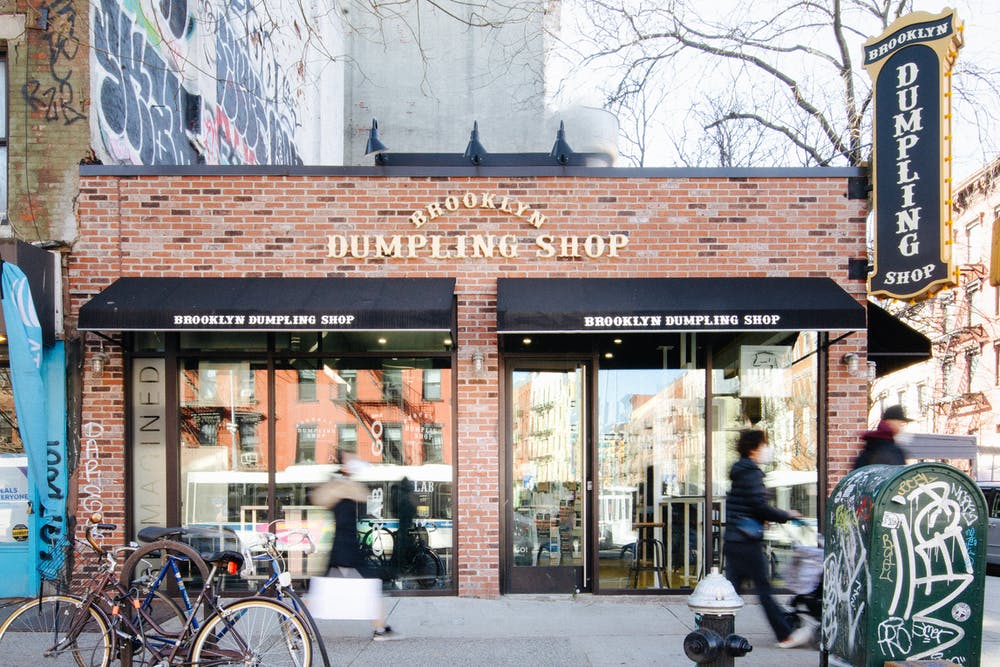Restaurants are employing a range of solutions to tackle the labor crunch, including raising their pay levels and paying bonuses to attract workers, streamlining their menus and operations to get by with fewer staff, and in many cases relying on technologies to reduce the need for some positions.
The growth of online and mobile app-based ordering in particular during the past two years has been helpful in keeping labor costs in check, as it has eliminated some of the labor involved in in-person order-taking. Similarly, the creation of dedicated pick-up areas for online orders and delivery drivers, along with lockers and other order fulfillment solutions has minimized the labor involved in order output.
According to the Bureau of Labor Statistics, the restaurant industry employed more than 750,000 fewer workers as of November 2021 than it did just before the pandemic. That drop in employment can be attributed both to the high number of permanent restaurant closures — nearly 80,000, or more than 10 percent of the total number of restaurants in the U.S., according to Datassential — and the fact that many workers appear to have left the industry for other jobs, such as warehouse work and ecommerce delivery.
“There's definitely a significant portion of the workforce that still seems to be sitting out," said Mike Smith, chief operating officer of Taziki’s Mediterranean Cafe, based in Birmingham, Alabama.
He said that in some markets Taziki’s restaurants have been able to hire and retain staff, while others have limited their hours of operation while attempting to fill needed positions. Wages have increased 20-30 percent in some markets, and the company has also offered hiring bonuses. It has added a new bonus program for restaurant managers.
“We have a creative menu development team that can figure out ways to put good items on our menu, but if we don't have the human capital in the stores, nothing else really matters,” said Smith.
He also issued a plea for the public to be patient with restaurant staff, who are often working long hours under stress, in addition to coping with supply chain shortfalls that may have eliminated some menu items.
“I think it's a great time of year to reflect on treating other people with respect,” he said. “It’s not the fault of the 20-year-old at the cash register that something upstream got broken, so give them a little grace if you can.”
Some restaurants are seeking to solve labor challenges with new technological efficiencies.
At Brooklyn Dumpling Shop in New York City, owner Stratis Morfogen said he is building a model that will operate with half the labor costs, or even less, than a traditional restaurant of similar volume. Instead of the typical 30 percent of sales spent on labor in a typical restaurant, Morfogen said he is operating Brooklyn Dumpling Shop with labor costs of around 15 percent, and he hopes to get that figure down even more with the addition of robotic fryers.
The concept focuses on contactless, phone-based ordering and order retrieval from temperature-controlled lockers, and minimal interaction with employees. One greeter is on hand to assist with placing orders if necessary, along with about three employees in the back handling the cooking and stocking the pick-up lockers from behind.
“The blueprint for Brooklyn Dumpling Shop … is a smaller footprint, lower labor costs, better wages for a smaller staff per hour on average, and then maximum profits,” said Morfogen.
In order to minimize on-site prep costs, the concept uses dumplings and other items that are made to the company’s specs by a co-packer and shipped frozen to the restaurant. It also uses technology to generate orders automatically from its supplier, eliminating another element of labor. It also does not accept cash — customers can order and pay on site from a kiosk if they have not done so ahead of time on their phones.
Morfogen created the restaurant after seeing the popularity of his nontraditional dumpling creations at his Brooklyn Chop House, which serves both steakhouse fare and Chinese food. He opened Brooklyn Dumpling Shop in May 2021 with a menu of bite-sized dumplings filled with sandwich ingredients, including pastrami dumplings, Philly cheesesteak dumplings, and breakfast dumplings, as well as spring rolls and a growing variety of other items.
After opening its original location on Manhattan’s Lower East Side, the concept has expanded to Hoboken, New Jersey, and the University of Connecticut, with additional locations planned for the New York area and beyond, and more than 100 franchised locations in the pipeline.
Morfogen said he was inspired by his childhood interest in automats, after which Brooklyn Dumpling Shop is loosely modeled, but also by a desire to create a restaurant operating model that could be successful in the long term, despite the rising costs of labor.
“Technology will save not just jobs, but technology will save the hospitality industry,” said Morfogen. “Hospitality needs to adapt to technology, or we are going to continue to lose restaurants and lose businesses.”
Among the reasons restaurants are often considered risky investments, he said, are that labor costs are high, and failure rates are high.
“We're always late to the game in embracing technology,” he said. “Now I'm trying to push our whole industry to embrace technology. Get rid of your cashiers.”
Morfogen said he is extending the use of technology to his other restaurants as well. At Pappas Taverna in New York, he is adding an automat-style pickup area for delivery drivers on an outside wall, so they do not have to engage with employees or interfere with customer service inside the restaurant.
Related: Tornado Victims to Benefit From David Burke's Beef, Bourbon Dinners; Ritz-Carlton Diverts 100 Percent of Food Waste.

